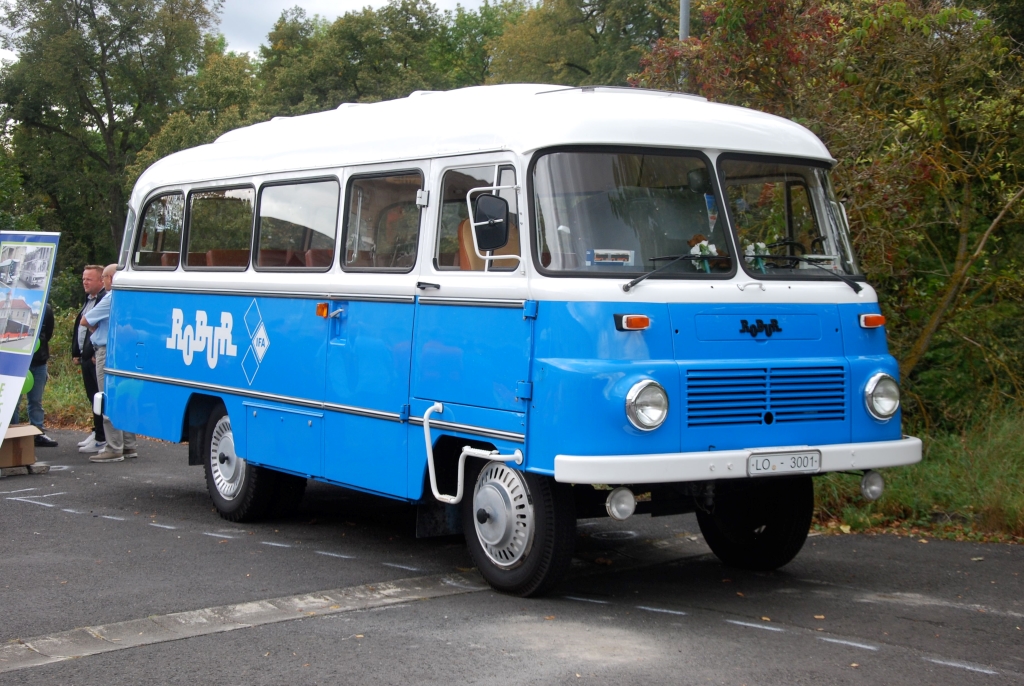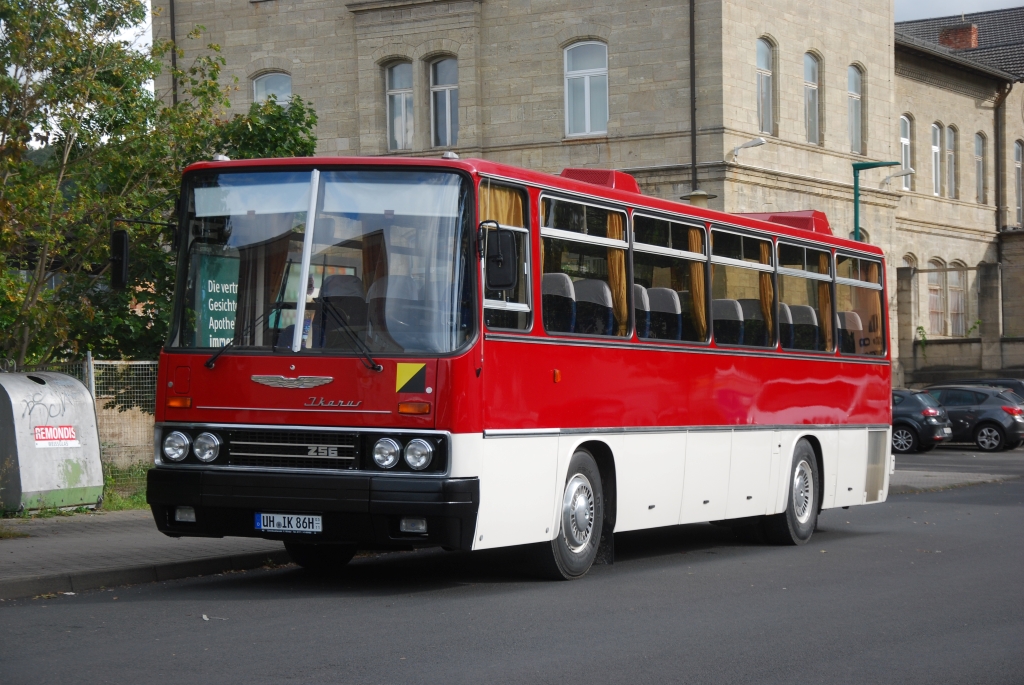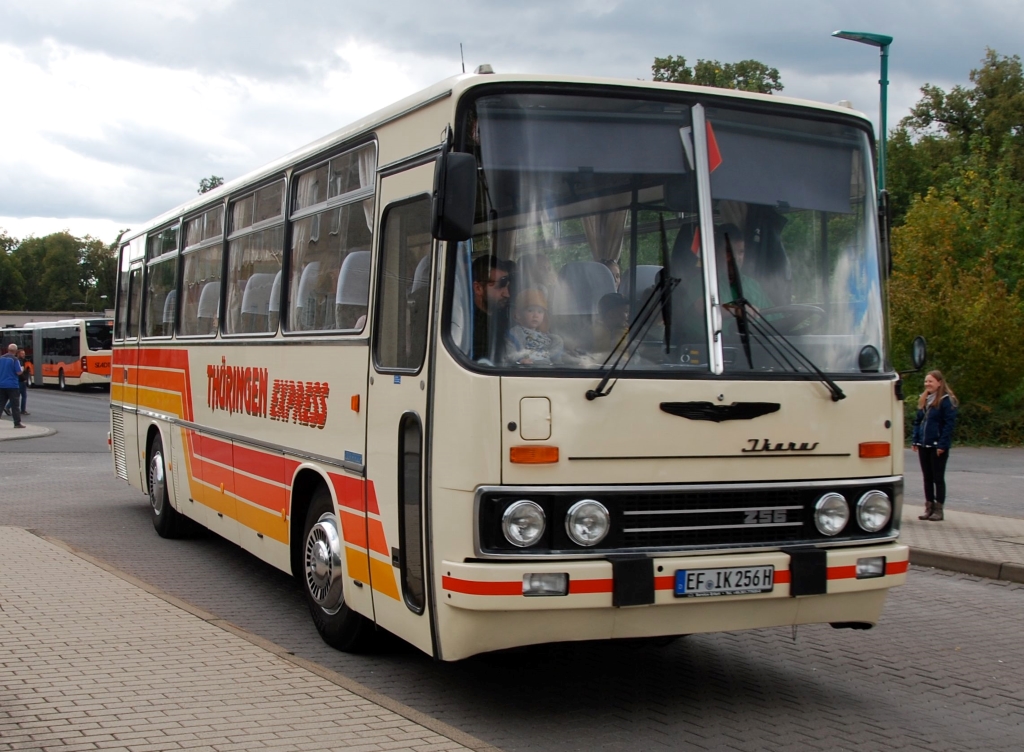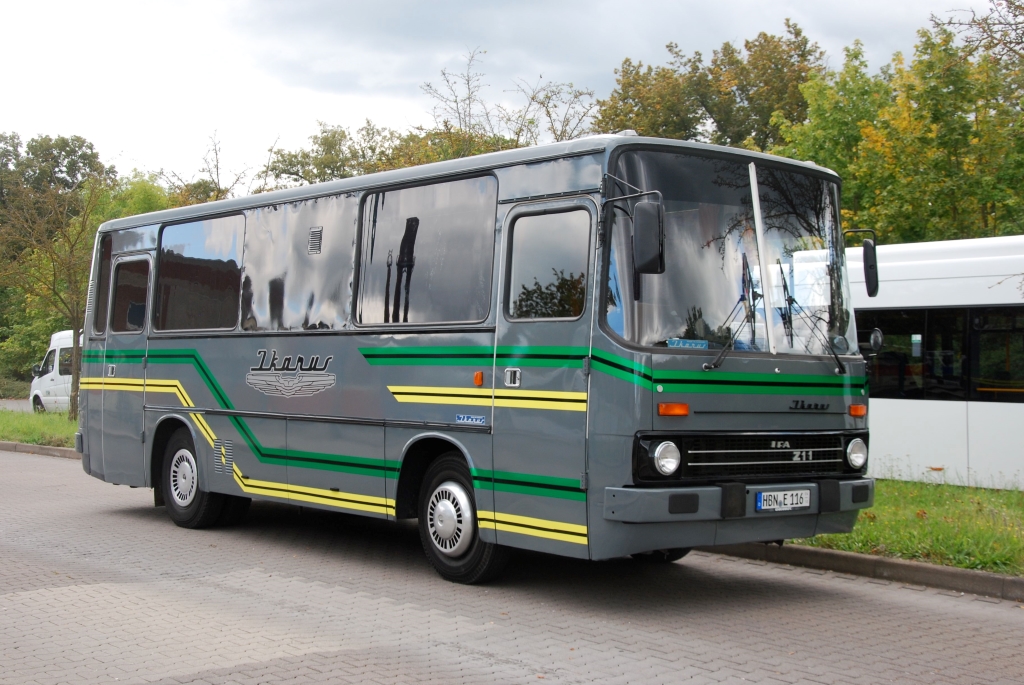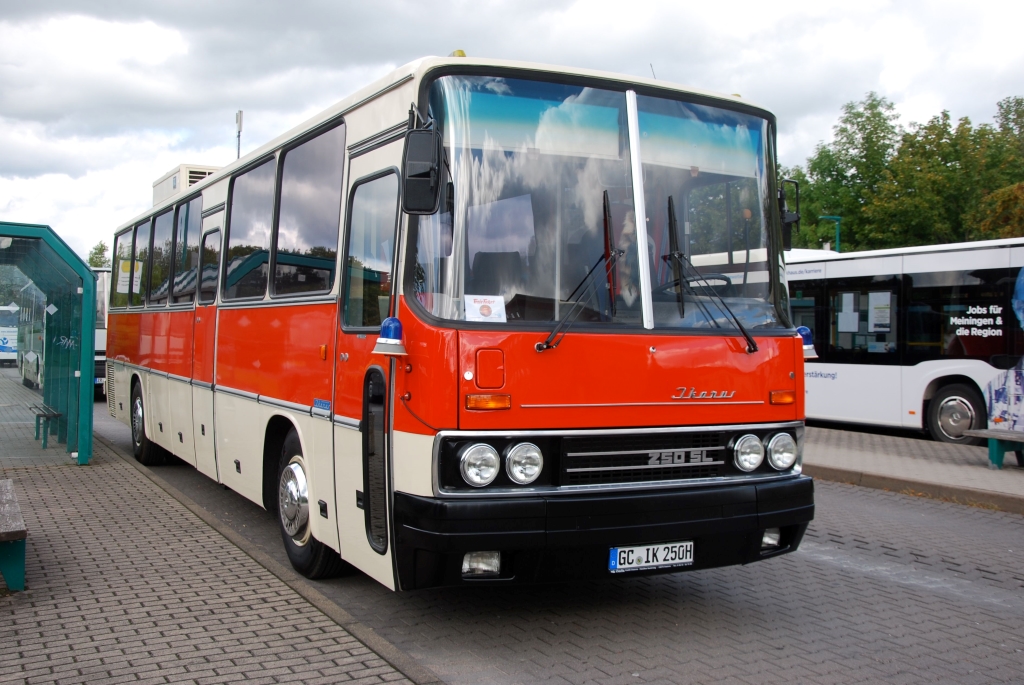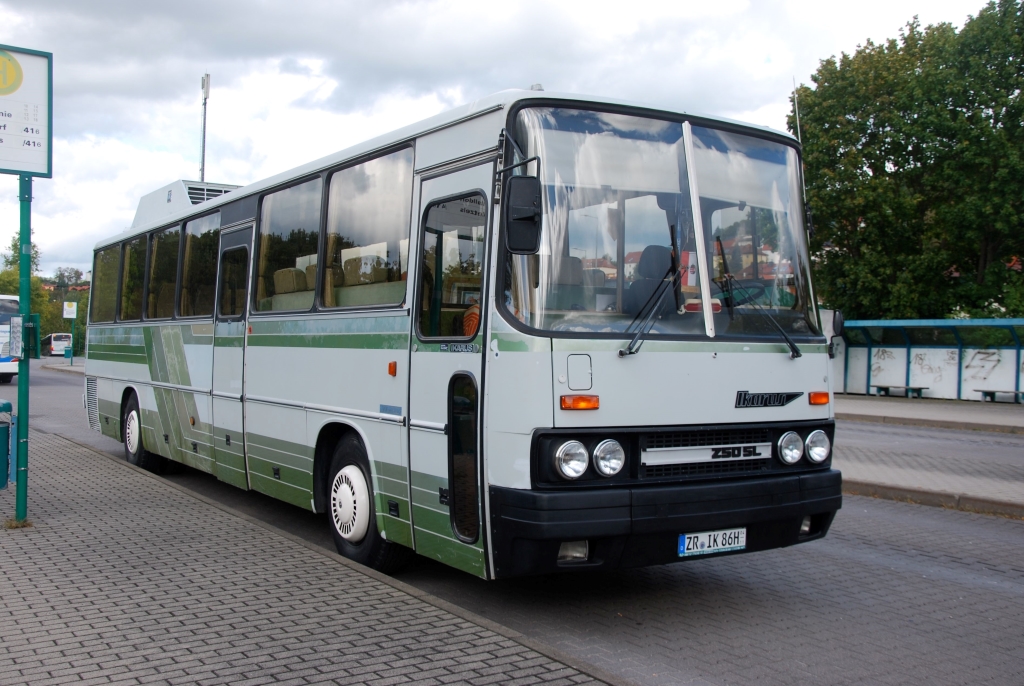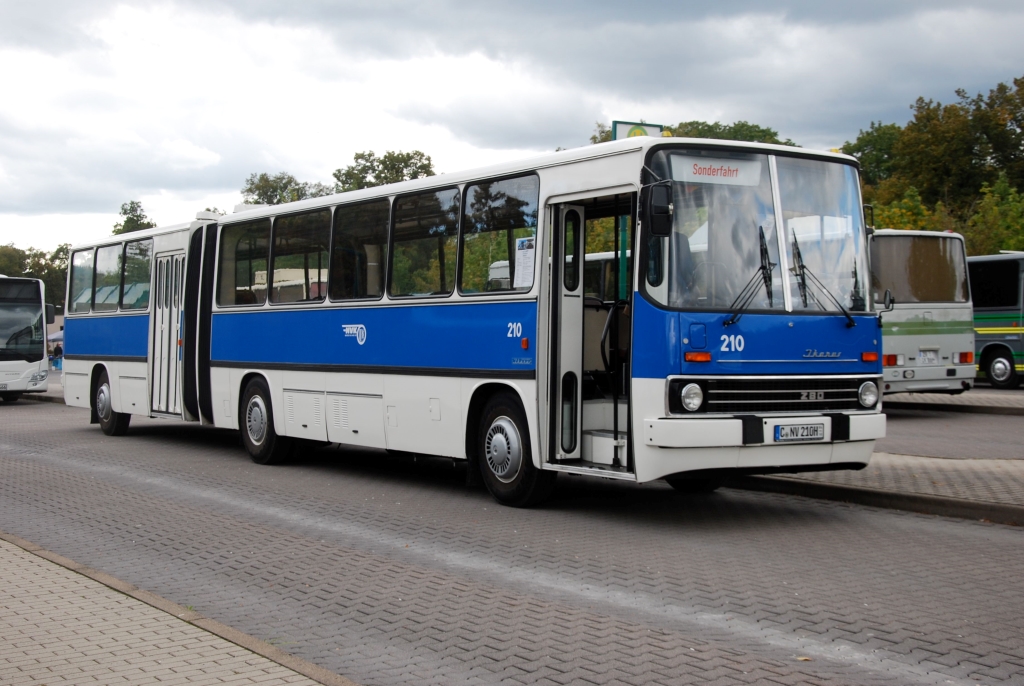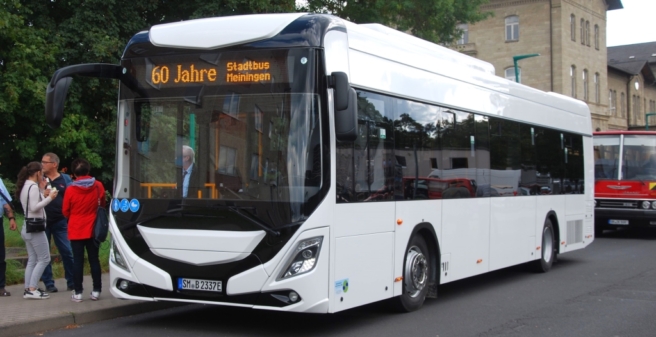
In the southwestern part of the German federal state of Thuringia, on the banks of the Werra, lies the (today’s) district town of Meiningen, not far from the border triangle of Thuringia / Hesse / Bavaria. Despite its (today) “only” about 21,000 inhabitants, it has a great past as the capital of the “Duchy of Saxony – Meiningen
A brief look back at the history of transport:
1710 – Long-distance stagecoach connection Nuremberg – Meiningen – Brunswick
In 1710 Meiningen was connected to the “big” world with a long-distance stagecoach connection from Nuremberg to Braunschweig via Bamberg – Coburg – Meiningen – Nesselberg – Gotha and on towards and over the Harz mountains. From end to end, the journey must have taken several days – after all, the horses get tired, and it certainly wasn’t a pleasure either …
Railway connection in 1859
Meiningen has been connected to the railway since 1859 – the line was originally part of the great German north-south connection Coburg – Meiningen – Eisenach through the Werra valley. The towns on the right and left of the Werra valley were still reached by stagecoach.
1909 – the post bus reaches Meiningen
This changed in 1909, when there were two modern transport changes in Meiningen. Firstly, a motorised “country postman” connection went into operation from Rütschenhausen to Jüchsen, on which two passengers could also be taken on weekdays. This connection is documented in a route map of the Thuringian Forest Association from this year.
On the other hand, according to the records of the Meininger Bus Betriebe (MBB), the Postbus makes its debut in Meiningen. At 3.45 p.m., a post bus departs for Helmershausen via Herpf. There will be two buses a day to Schwarza. Helmers and Roßdorf are also connected twice a day.
Before the First World War, the “Postbus” was mainly used in Hamburg, Hesse and Bavaria, but the MBB documents mentioned above also show such connections in the Duchy of Saxony – Meiningen.
On July 1, 1913, a motor post line went into operation from Meiningen via Helmershausen and Kaltennordheim to Fladungen, which thus already led to a neighbouring country, namely Bavarian Franconia. The wagon travelled two hours on this route from Endev to Endev.
In the 1920s, other lines gradually followed. In 1921, a “Kraftverkehrsgesellschaft” (motor transport company) strives for a line Suhl – Zella-Mehlis – Schwarza – Meiningen, which, however, only goes into operation on 15 June 1925, and then with buses from the post office.
In 1932, the post office set up a depot in Meiningen, in Friedrichstraße. (This suggests that the post office buses, which were previously on the road in Meiningen, were stationed outside and came into the town from outside.
1936 – “Stadtkraftpost” Meiningen”
A course book of the German Kraftpost lines from 1936 lists a “Stadtkraftpost Meiningen”. The book does not say anything about where this “Stadtkraftpost” went from to where, nor does it give any timetable data, but a service that is listed in the course book should have really existed.
Note: that Kraftpost course book from 1936 lists the Postbus lines – quite differently from later – in the alphabetical order of the starting points of the lines. Thus Meiningen in Thuringia (today) follows Meinersen in Brunswick. There are quite a few kilometres in between. This is certainly the quickest way to find the individual starting points of the lines, but it is almost impossible to get an overview of the lines in a particular region. Example: You want to get from Meinersen to Mehrum with a change in the district town of Peine. And how do you find your connection? Starting point under “M” (like Meinersen), the connection under “P” like Peine … Sounds “impractical”.
1952 – VEB Kraftverkehr Schmalkalden, Meiningen branch, founded
In 1952, VEB Kraftverkehr Schmalkalden, Meiningen branch, was founded as a public transport company in the region. Initially it had 17 buses and operated services within the district.
1953 – End of the Postbus in the GDR
Meinigen kept its post bus routes, even into the GDR era. The GDR’s “Deutsche Post” was now responsible. This changed in 1953, when the GDR post office had to close its bus line.
1953 – End for the Postbus in the GDR
Meinigen kept its post bus routes, even into the GDR era. The GDR’s “Deutsche Post” was now responsible. This changed in 1953, when the GDR Post Office had to hand over its bus routes to the newly founded “VEB Kraftverkehre”. The “VEB Kraftverkehr Schmalkalden, Betriebsteil Meiningen” (VEB Motor Transport Schmalkalden, Meiningen Branch), which had been founded a year earlier, became responsible for Meiningen and took over the routes and buses.
September 1963 – the “Meiningen City Bus
In September 1963, VEB Kraftverkehr launches its own city bus service for the town of Meiningen. The individual VEBs still have their own design. (It was not until later that Ikarus always painted the buses ordered here in large numbers the same, for example in orange, regardless of who would get the finished bus. This was based on a sensible consideration: it makes production easier and therefore cheaper if you don’t have to change the colour every time you paint the bus …
Towards the end, the GDR solved the “problem” in yet another way: (almost) all new buses for the GDR first went from the factory to (East) Berlin, and for this they were given a special “East Berlin” livery. After about a year in the “capital of the GDR” they were then passed on to the other companies in the country – without being given a new paint job after such a short time – and Berlin got new vehicles again. If this had gone on for a long time, East Berlin would very soon have had a tremendously young bus fleet, while all the other transport companies would have had (almost) only second-hand vehicles in their yards. – It didn’t turn out that way, because the “Wende” came at the end of 1989 …
In 1963, at any rate, the bus companies in the GDR could still say to Ikarus in which individual colours of the respective company they wanted their ordered buses to be painted. In Meiningen, they decided on the basic colour cream for the city bus. Under the window band there was a wide “belly band” in orange, with the words “Stadtlinie” and the town’s coat of arms emblazoned in large black letters.
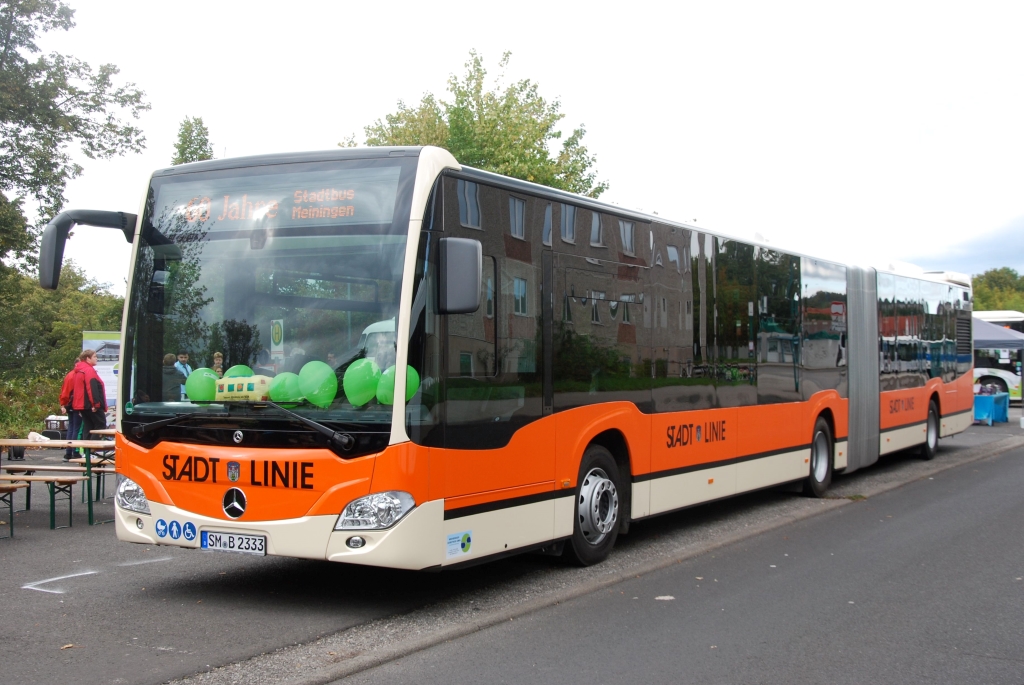
Meiningen’s city bus today
Meiningen’s city bus is operated today by “Meininger Busbetriebs GmbH (MBB)”. There are eight city lines. The main route, Kiliansberg – town centre – Dreißigacker, runs daily from 4.30 a.m. to 11 p.m., sometimes at 15-minute intervals. In addition, MBB operates the city services in Oberhof, Schmalkalden and Zella-Mehlis.
In addition, MBB operates regional transport in the current district of Schmalkalden-Meiningen. (Even though Schmalkalden is mentioned first, the district capital is the former state capital Meiningen.
MBB operates 115 buses, 75 of its own and 40 private ones “on behalf”. There are 115 drivers for the own buses, which means that some buses can only be in operation in one shift.
MBB’s fleet of vehicles is quite colourful. There is everything from “quite small” to “quite large”, from the small Mercedes Sprinter Citybus to the “full-grown” articulated bus (Mercedes Citaro). There are also interesting “specialists” in the fleet, such as an Iveco Daily with a body by the Slovakian coachbuilder Rosero. MBB refer to this vehicle on their homepage as “The biggest among our small ones”.
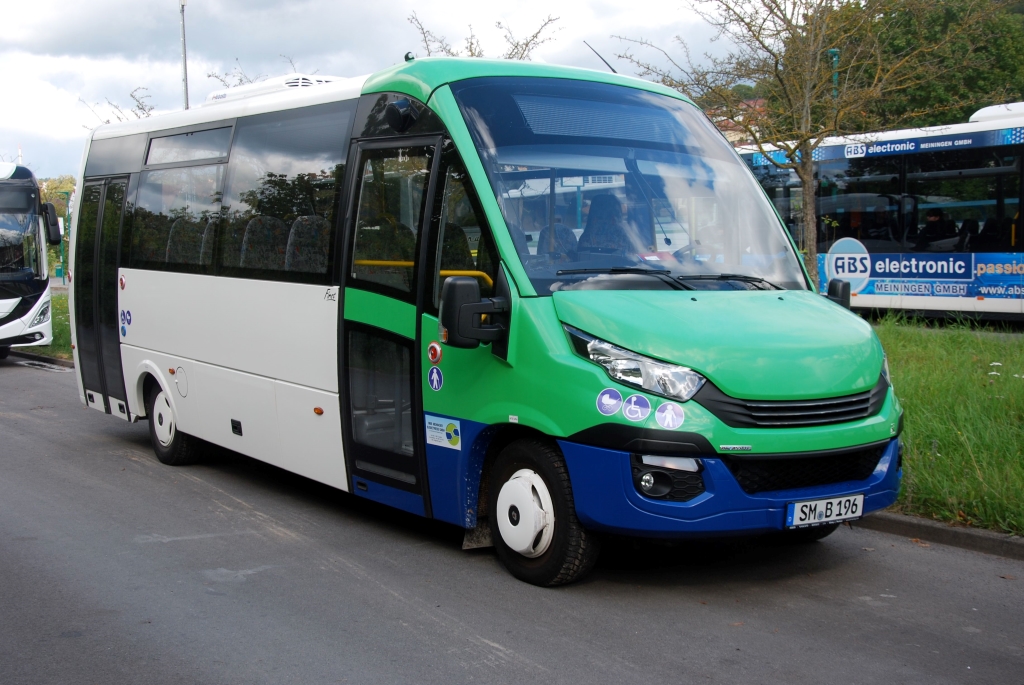
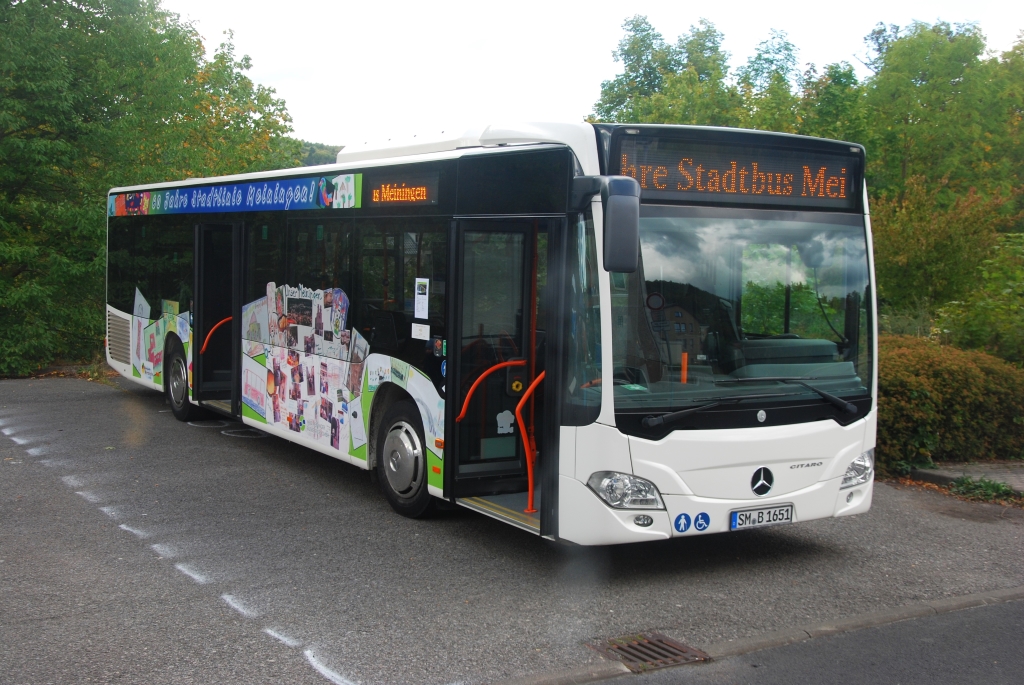
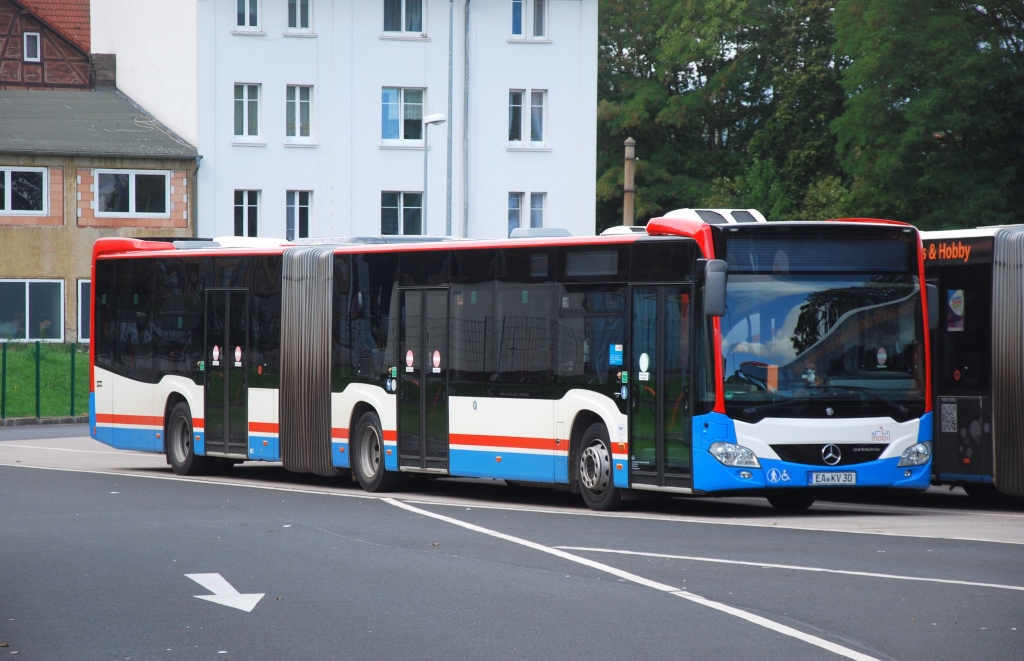
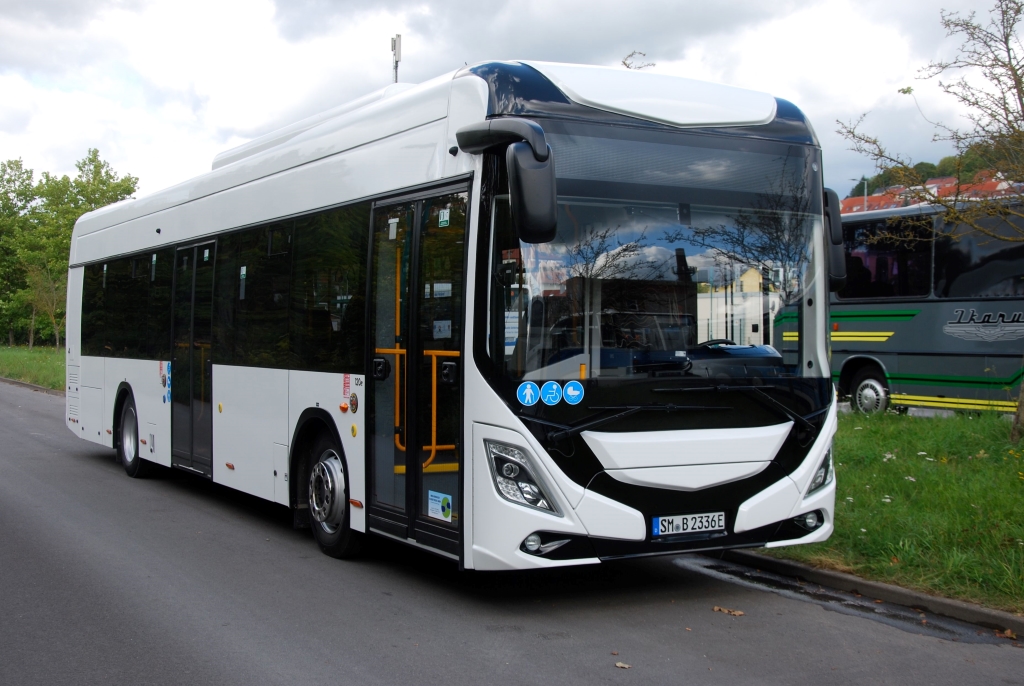
Since 2023, there are also two large battery electric buses in the 12-metre class. The coaches “SM-B 2336 E” and “SM-B 2337 E” come from a well-known manufacturer, namely Ikarus, and they are of the “120 e” type. They serve Meiningen city lines and are loaded overnight at the depot. MBB Managing Director Peter says: “Our electric bus fleet will be successively expanded in the coming years. It is expected that the conversion to alternative drives will be completed around 2040.”
And Peter continues, “We operate in a topographically challenging landscape. The lowest point in our route network is at 250 metres altitude, the highest point at 900 metres.” The diesel buses are motorised accordingly: the Mercedes articulated Citaro “SM-B 2333”, also purchased this year, puts an impressive 394 hp (290 kW) on the road, a performance that is probably familiar from coaches, but rather not from regular service vehicles. Unless, of course, it has to climb the mountains of the Thuringian Forest …
Older buses shown the the 60th anniversary event:
